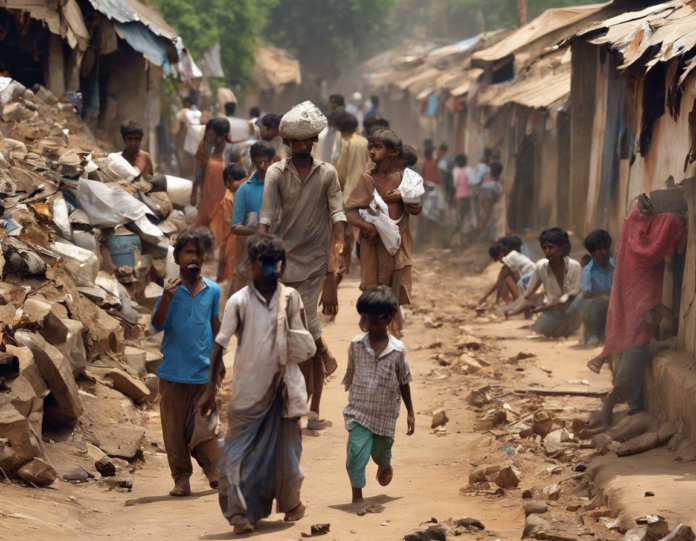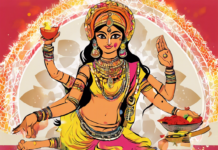India is often referred to as a developing country, a term used to describe emerging economies that are in the process of industrialization, urbanization, and overall growth. The concept of “Third World” originated during the Cold War era to categorize countries based on their alignment with either NATO (First World) or the Communist Bloc (Second World). Countries that did not align with either side were considered the “Third World.”
Here, we delve into why India is considered a developing country, exploring various factors like economic growth, social indicators, and challenges faced by the nation in its development journey.
Economic Growth and Development
India has shown significant economic progress over the years, especially after the economic reforms of the early 1990s. The country has transitioned from a primarily agrarian economy to one driven by services and manufacturing. The service sector, including IT, telecommunications, and finance, has been a major contributor to India’s GDP growth.
Key Points:
– Gross Domestic Product (GDP): India is one of the fastest-growing major economies in the world, with a GDP of over $2.8 trillion (2021).
– GDP Growth Rate: India’s GDP growth rate has averaged around 6-7% in recent years, showing resilience in the face of global economic challenges.
– Per Capita Income: While India’s per capita income is still below the global average, it has been steadily rising.
Social Indicators and Human Development
Despite economic growth, India faces challenges related to social indicators and human development. Issues like poverty, illiteracy, healthcare, and gender inequality continue to impact a significant portion of the population.
Key Points:
– Poverty: India is home to a large number of people living below the poverty line, with poverty rates varying across states and regions.
– Literacy Rate: While India has made progress in improving literacy rates, there is still a significant literacy gap, especially between urban and rural areas.
– Healthcare: Access to quality healthcare remains a challenge for many Indians, with disparities in healthcare infrastructure and services.
Challenges and Opportunities
India’s development journey is marked by both challenges and opportunities. The country’s vast population, diverse culture, and democratic setup present unique opportunities for growth and progress. However, issues like income inequality, infrastructure development, environmental sustainability, and political reforms pose significant challenges.
Key Points:
– Infrastructure: India needs substantial investments in infrastructure development, including transportation, energy, and urban planning, to support its growing population and economy.
– Environmental Sustainability: Rapid industrialization and urbanization have led to environmental degradation and pollution, necessitating sustainable development practices.
– Political Reforms: Strengthening governance structures, ensuring transparency, and combating corruption are essential for sustainable development in India.
Future Outlook
Despite the challenges, India’s future outlook remains optimistic. The country’s young population, entrepreneurial spirit, focus on innovation and technology, and global partnerships position it well for continued growth and development. Initiatives like “Make in India,” digital transformation, and renewable energy adoption signal India’s commitment to a more inclusive and sustainable future.
In conclusion, while India is no longer categorized as a “Third World” country, it is still on its development journey, striving to overcome challenges and build a prosperous future for its citizens.
FAQs (Frequently Asked Questions)
1. Is India a developing country or a developed country?
India is classified as a developing country due to its ongoing economic growth, social challenges, and efforts to improve human development indicators.
2. What are some key factors driving India’s economic growth?
Factors driving India’s economic growth include a large consumer base, a growing services sector, foreign investment, and government initiatives to promote entrepreneurship and innovation.
3. How does India fare in terms of technological advancements and innovation?
India has emerged as a global hub for technology and innovation, particularly in the IT sector. The country is known for its software services, digital solutions, and a thriving startup ecosystem.
4. What are some of the social challenges that India faces?
India faces social challenges such as poverty, illiteracy, healthcare disparities, gender inequality, and lack of access to basic amenities in certain regions.
5. What role does India play on the global stage in terms of trade and diplomacy?
India is an active participant in global trade and diplomacy, engaging with various countries and international organizations to strengthen economic partnerships, promote peace, and address global challenges.
6. How is India addressing environmental sustainability and climate change?
India has committed to environmental sustainability through initiatives like renewable energy adoption, afforestation projects, and compliance with international agreements like the Paris Agreement on climate change.
7. What opportunities does India offer for foreign investors and businesses?
India offers opportunities for foreign investors and businesses in sectors like IT, manufacturing, renewable energy, healthcare, infrastructure development, and e-commerce due to its large market size and skilled workforce.
8. How does India’s cultural diversity contribute to its development journey?
India’s cultural diversity enriches its social fabric, fosters creativity and innovation, and promotes inclusivity in policies and programs aimed at national development.
9. What are some key government initiatives focused on socio-economic development in India?
Government initiatives like Swachh Bharat Abhiyan (Clean India Mission), Digital India, Skill India, and Pradhan Mantri Jan Dhan Yojana (financial inclusion program) aim to address social and economic development challenges in India.
10. What are the prospects for India in the global economy in the coming years?
India is poised to play a significant role in the global economy in the coming years, with forecasts projecting sustained economic growth, continued reforms, and increased participation in international trade and investment.









